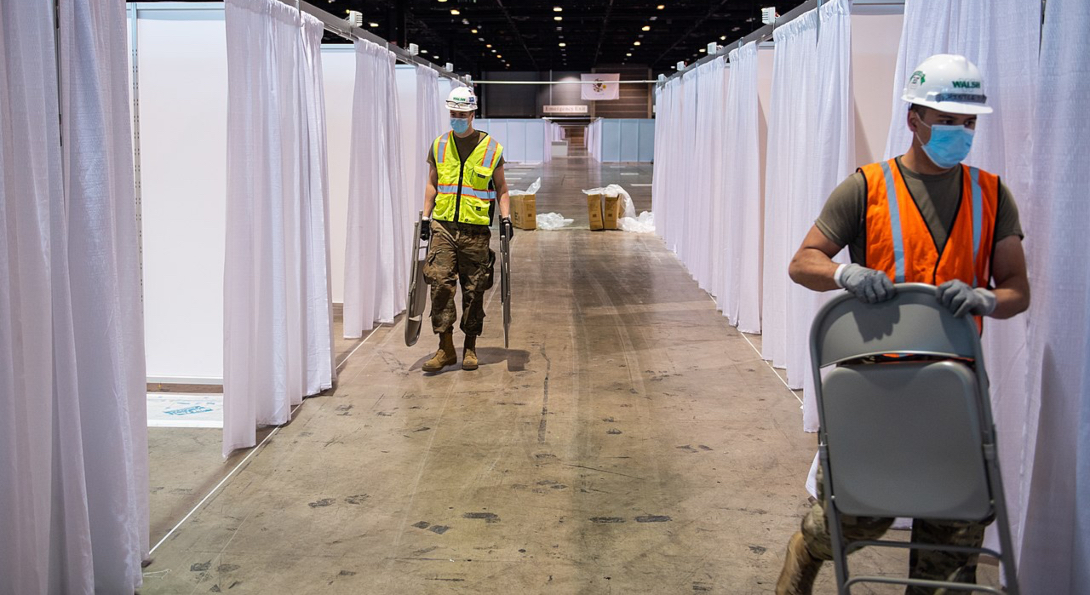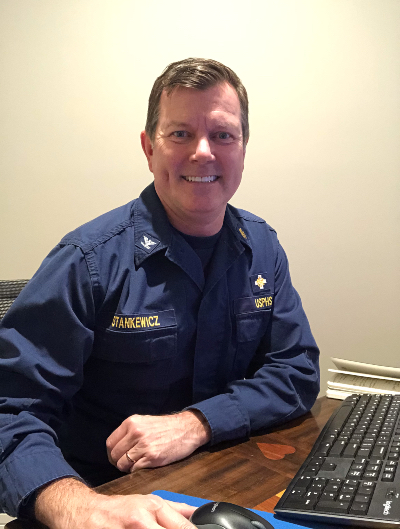Alumnus Serves on Front Lines of COVID-19 Response

Story text

When the Centers for Disease Control and Prevention (CDC) declared its first federal quarantine since the 1960s, University of Illinois Chicago (UIC) School of Public Health alumnus Todd Stankewicz, MPH in Health Policy and Administration and Master of Business Administration ’01, was called into action.
As a regional emergency coordinator with the U.S. Department of Health and Human Services’ (HHS) Office of the Assistant Secretary for Preparedness and Response and captain in the U.S. Public Health Service Commissioned Corps, Stankewicz was sent to Travis Air Force Base in California to prepare for the first two chartered flights repatriating U.S. citizens and their families from Wuhan, China back to the United States.
“This is something we had never done before,” Stankewicz said. “We needed to understand all the logistics that go into a repatriation and quarantine mission, including daily screening for COVID-19 symptoms, basic medical care for other health conditions, accommodations and meals, linens and housekeeping, and everything you need to keep people as comfortable as possible in a situation they don’t want to be in.”
Stankewicz coordinated with the U.S. Department of Defense, Customs and Border Patrol and the CDC. The complexities of a historical operation ranged from identifying temporary accommodations on a military base, building a process for immigration processing and enforcing standards on the use of personal protective equipment (PPE).
Immediately following the repatriation of Americans from Wuhan, Stankewicz collaborated with Princess Cruise Lines as the base prepared to intake passengers from the Grand Princess cruise ship. HHS relocated almost 2,000 passengers from the Grand Princess cruise ship to four Department of Defense military facilities, one of which was Travis.
Selected quote
This unprecedented response had presented significant logistical challenges for both passengers and responders. We were very concerned about the well-being and the mental health of these individuals. However, within time it became a pretty well-oiled machine, much more systematic, and we were able to make everyone more comfortable in the process.
| U.S. Public Health Service Commissioned Corps
Story text, continued.
In his role as a regional emergency coordinator, Stankewicz works to aid Illinois, Indiana, Michigan, Minnesota and Wisconsin with emergency preparedness. With the declaration of a national emergency, HHS began working closely with the Federal Emergency Management Agency (FEMA) to lead coordination of health and medicine needs in the emergency response.
Stankewicz collaborated with FEMA to assist region 5 states in obtaining PPE. He coordinated distribution of supplies from the Strategic National Stockpile and worked with FEMA on air bridges to fly in supplies from other nations.
While the private sector adjusted to the influx in demand for PPE, Stankewicz worked with states in his region to distribute and put into use machines that sterilize PPE, in particular N95 masks.
“We’re trying to take some pressure off the supply chain while still encouraging very strong CDC guidelines for reuse and conservation,” Stankewicz said. “There were still shortages we’ve all heard about, but these steps helped bridge some of those gaps.”
He also advised Chicago and Illinois officials on the development of the alternate care site at McCormick Place in Chicago. Similarly, he worked with officials on the development of a hospital extension at the TCF Center in Detroit. Like preparing Travis Air Force base, building alternate care sites posed logistical challenges, from locating cots to securing medical staff.
At the national level, Stankewicz has worked with other HHS agencies, including the CDC and the Office of the Secretary of Health to coordinate testing supplies and apply guidance from the latest epidemiological studies.
“This is obviously stressing the system to a great extent, but there’s an opportunity for us to learn from this in planning for these types of events in the future,” Stankewicz said. “We have pandemic plans in the states, and this is a way to improve those plans and really work toward the next big thing that is going to happen.”